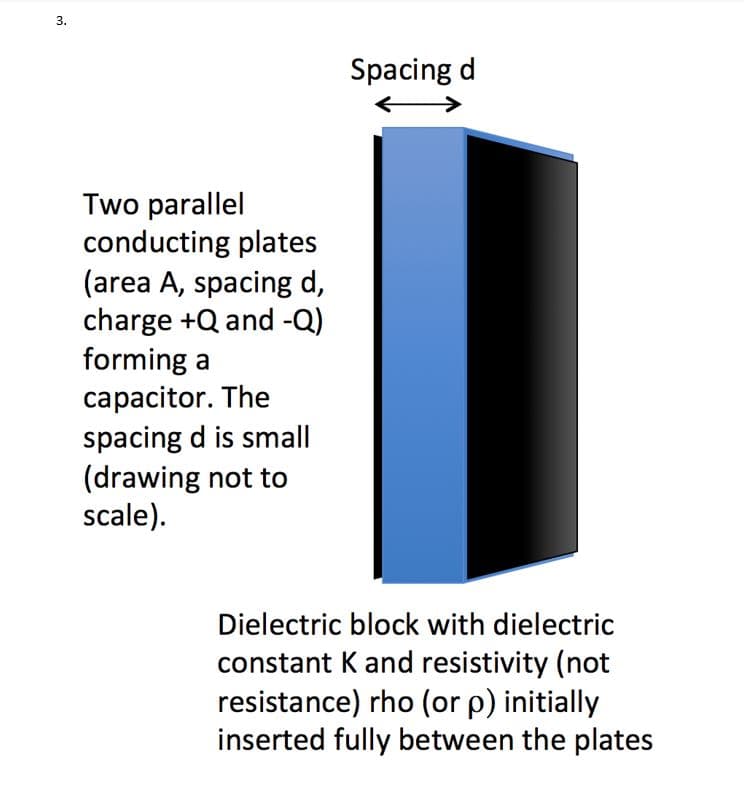We fill a parallel-plate capacitor (spacing d, area A) with an imperfect dielectric material. This material has dielectric constant K, but resistivity (not resistance) rho. If we charge the capacitor plates to charge +Q and -Q, how much current flows across the dielectric and why?
We fill a parallel-plate capacitor (spacing d, area A) with an imperfect dielectric material. This material has dielectric constant K, but resistivity (not resistance) rho. If we charge the capacitor plates to charge +Q and -Q, how much current flows across the dielectric and why?
Related questions
Question

Transcribed Image Text:We fill a parallel-plate capacitor (spacing d, area A) with an imperfect dielectric material. This material
has dielectric constant K, but resistivity (not resistance) rho. If we charge the capacitor plates to charge
+Q and -Q, how much current flows across the dielectric and why?

Transcribed Image Text:3.
Spacing d
Two parallel
conducting plates
(area A, spacing d,
charge +Q and -Q)
forming a
capacitor. The
spacing d is small
(drawing not to
scale).
Dielectric block with dielectric
constant K and resistivity (not
resistance) rho (or p) initially
inserted fully between the plates
Expert Solution
This question has been solved!
Explore an expertly crafted, step-by-step solution for a thorough understanding of key concepts.
This is a popular solution!
Trending now
This is a popular solution!
Step by step
Solved in 2 steps with 2 images
